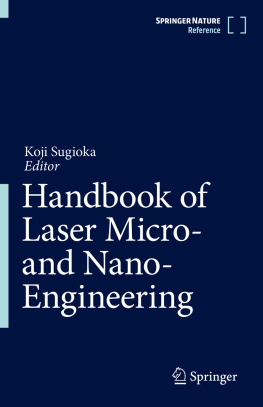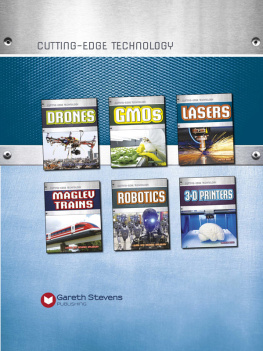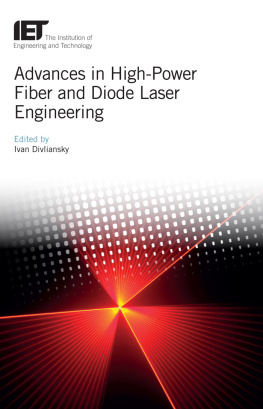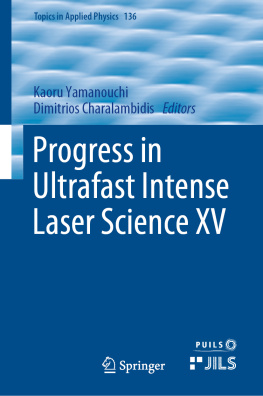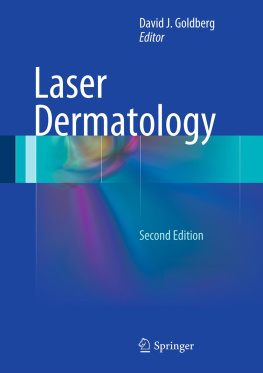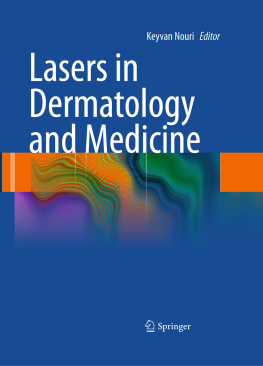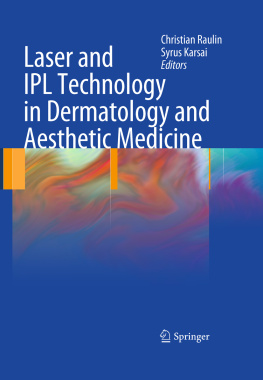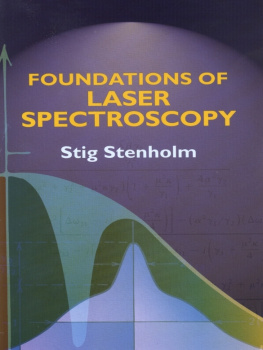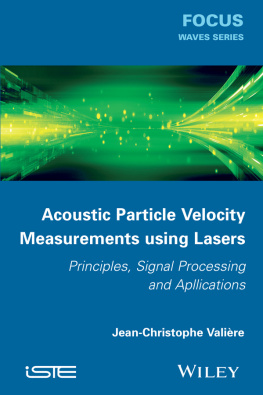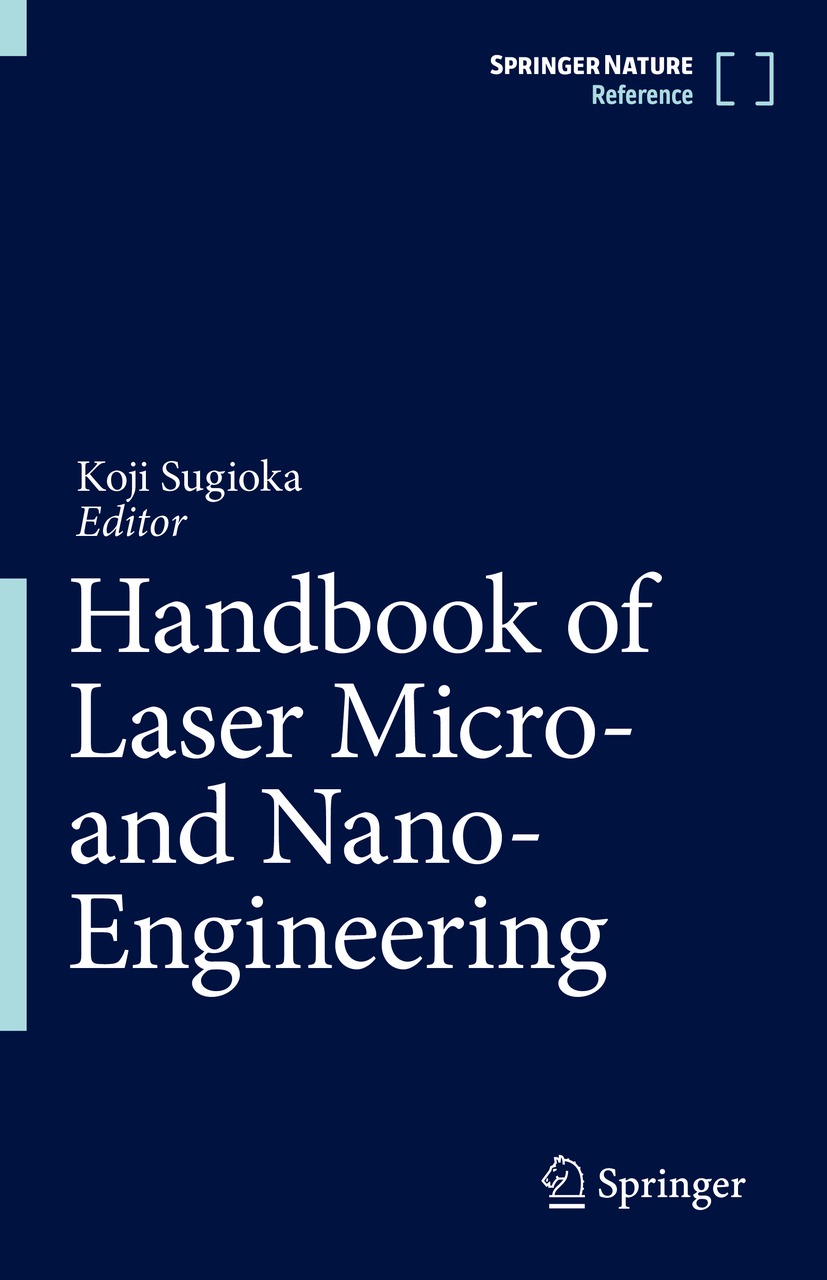Handbook of Laser Micro- and Nano-Engineering
1st ed. 2021
With 1136 Figures and 65 Tables

Logo of the publisher
Editor
Koji Sugioka
RIKEN Center for Advanced Photonics, Wako, Saitama, Japan
ISBN 978-3-030-63646-3 e-ISBN 978-3-030-63647-0
https://doi.org/10.1007/978-3-030-63647-0
Springer Nature Switzerland AG 2021
This work is subject to copyright. All rights are reserved by the Publisher, whether the whole or part of the material is concerned, specifically the rights of translation, reprinting, reuse of illustrations, recitation, broadcasting, reproduction on microfilms or in any other physical way, and transmission or information storage and retrieval, electronic adaptation, computer software, or by similar or dissimilar methodology now known or hereafter developed.
The use of general descriptive names, registered names, trademarks, service marks, etc. in this publication does not imply, even in the absence of a specific statement, that such names are exempt from the relevant protective laws and regulations and therefore free for general use.
The publisher, the authors and the editors are safe to assume that the advice and information in this book are believed to be true and accurate at the date of publication. Neither the publisher nor the authors or the editors give a warranty, expressed or implied, with respect to the material contained herein or for any errors or omissions that may have been made. The publisher remains neutral with regard to jurisdictional claims in published maps and institutional affiliations.
This Springer imprint is published by the registered company Springer Nature Switzerland AG
The registered company address is: Gewerbestrasse 11, 6330 Cham, Switzerland
Foreword
After the first realization of a laser in 1960, immediately applications of the rather small average power devices have been investigated and step by step reached market relevant applications. In the 1970s, laser powers have been scaled to the kW-regime and corresponding applications were developed. The most impact applications in these days of the beginning had laser cutting, drilling, and welding. Space and military applications promised unique characteristics of these devices with utmost highest quality of energy ever seen in history and led to very high powers. Consequently, materials processing covering all gages and materials used in modern engineering got very popular and multibillion dollar markets became reality. Applications have been developed in and for all relevant markets of our modern society, and the world would not exist as today without lasers.
As Nobel Prize winner Richard P. Feynman said already in 1959: Theres plenty of room at the bottom. However, the micro- and nano world was accessed by laser applications only relatively late, and for decades there was practically only one nano application of relevance, the use of excimer laser radiation for lithography, microchip making.
This changed at the latest with the advent of nano technology in general, with the beginning of this millennium, and in the last 20 years an extreme diversity of processes, treatments, and corresponding lasers has been developed for micro- and nanoengineering. The number of research groups increased exponentially as well as the results, so it is very difficult for the general application engineer to get his head above this huge amount of data.
Handbooks like this are a perfect basis for overcoming the challenge of making the state of the art accessible for scientists and application engineers. The extremely well-chosen set of contributions covers the vast spectrum of knowledge in a very comprehensive way. It contains all relevant present trends and developments of the field. Fifty-seven chapters with up to 90 pages each are sorted in nine parts, easy to handle, and find specific areas of interest.
Editor in chief, Professor Koji Sugioka from RIKEN/Japan managed this worldwide unique summary in an outstanding way by identifying and coordinating all relevant scientific groups and their leaders. The list of contributors represents the actual competencies of the international micro- and nano laser application community.
RWTH Aachen University Reinhart Poprawe
Fraunhofer Institute for Laser Technology Aachen
Reinhart Poprawe
Preface
This handbook provides a comprehensive review of the entire field of laser micro and nano processing, including not only a detailed introduction to individual laser processing techniques but also the fundamentals of laser-matter interaction and lasers, optics, equipment, diagnostics, as well as monitoring and measurement techniques for laser processing. It consists of nine parts, each supervised by world-famous scientists as section editors, ensuring high-quality content and comprehensive coverage of the field. Specifically, part I deals with fundamentals of laser-matter interaction for deep understanding of mechanism of laser micro and nano processing. Parts II and III review laser systems and optics and processing apparatus for micro and nano processing, respectively, which give general information and the state-of-the-art of technologies to perform the experiments for laser micro and nano processing. Parts IV to VIII describe details of different types of laser micro and nano processing covering the entire fields, including modification and surface structuring, materials removal and subtractive processing, micro additive materials manufacturing, material synthesis and creation of novel structures, and biological applications. Part IX introduces diagnostics and monitoring and measurement techniques, which provide useful knowledge to analyze the process and to characterize the laser-processed samples. Each part contains five to nine chapters written by leading experts in the relevant fields from all over the world, including Australia, Austria, Canada, China, Czech Republic, Denmark, France, Germany, Italy, Japan, Lithuania, Portugal, Romania, Singapore, Spain, the UK, and the USA.
Lasers have found applications in materials processing practically since their invention in 1960 and are currently used widely in manufacturing. Lasers can provide unique solutions in materials processing with high quality, high efficiency, high flexibility, high resolution, versatility, and low environmental load. Macro processing based on thermal effect using infrared lasers such as CO2 lasers has been the mainstream in the early stages, while research and development of micro and nano processing are becoming increasingly active as short wavelength and/or short pulse width lasers have been developed. In particular, recent advances in ultrafast lasers have opened up a new avenue to laser material processing due to the capabilities of three-dimensional fabrication as well as ultrahigh precision micro- and nanofabrication of a variety of materials. In fact, the ultrafast lasers are increasingly being utilized in a manufacturing industry, which has given a boost to award the Nobel Prize in Physics 2018 to Prof. Grard Mourou and Prof. Donna Strickland for their method of generating high-intensity, ultra-short optical pulses.
This handbook is the first one covering the fundamentals, the state of the art, and important applications of the dynamic and rapidly expanding discipline of laser micro- and nanoengineering. It is the ultimate desk reference on the subject, providing essential scientific and technical information to researchers and engineers already working in the field as well as students and young scientists who plan to work in the area in the future.

